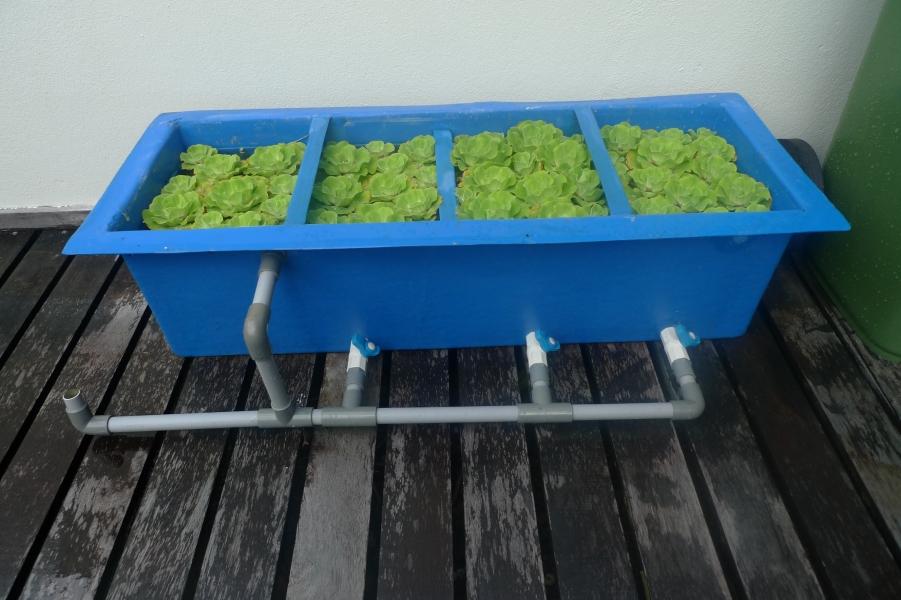
DIY Koi Pond Filter Design: The Ultimate Guide
Introduction
Koi are beautiful and colorful fish that can brighten up any pond. However, keeping koi healthy requires more than just filling up a pond with water and adding fish. A pond filter is a crucial component for maintaining the health and beauty of your koi pond. In this guide, we will show you how to design and build a DIY koi pond filter to keep your fish healthy and happy.
Why a Koi Pond Filter Is Important
A pond filter is important for several reasons:
- Removes waste and debris from the pond
- Keeps water clear and healthy for fish and plants
- Reduces the need for water changes
- Prevents harmful bacteria from growing in the pond
Without a pond filter, fish waste and uneaten food will accumulate in the pond, leading to poor water quality and potentially harmful bacteria growth. A koi pond filter helps remove these impurities and keeps the pond clean and healthy.
Types of Koi Pond Filters
There are several types of pond filters available on the market. Here are some of the most common types:
Mechanical Filters
Mechanical filters work by physically trapping debris and waste particles in a filter media. These filters are effective at removing large particles from the water, but they do not remove dissolved impurities.
Biological Filters
Biological filters use beneficial bacteria to break down waste and convert it into less harmful compounds. These filters are essential for maintaining healthy water quality in a koi pond.
UV Sterilizers
UV sterilizers use ultraviolet light to kill harmful bacteria and parasites in the pond water. These filters do not physically remove debris from the water, but they are an effective way to prevent disease in koi.
DIY Koi Pond Filter Design
Building your own koi pond filter can be a rewarding and cost-effective way to improve the health and beauty of your pond. Here are some steps to follow when designing and building a DIY koi pond filter.
1. Determine the Size of Your Pond
The first step in designing a koi pond filter is to determine the size of your pond. This will help you determine the size and type of filter you need. As a general rule of thumb, the filter should be able to handle at least half the volume of the pond water per hour.
2. Choose the Type of Filter
Based on your pond size and your filtration needs, choose the type of filter you want to build. Mechanical filters are the easiest to build and are effective at removing large debris from the water. Biological filters are more complex but are essential for maintaining healthy water quality. UV sterilizers can be added to any type of filter for extra disease prevention.
3. Choose the Filter Media
Choose the filter media based on the type of filter you are building. Mechanical filters require coarse media such as plastic or ceramic material, while biological filters require fine media such as bio-balls or filter foam. UV sterilizers do not require any media.
4. Build the Filter
Once you have determined the type of filter and media, it’s time to start building! Here are some general steps you can follow for building a DIY koi pond filter:
- Choose a container for your filter, such as a plastic tub or PVC pipe
- Drill holes in the sides or bottom of the container for water flow
- Install PVC fittings for inlet and outlet
- Add filter media to the container
- Plumb the filter into your pond pump system
Maintenance of Your Koi Pond Filter
Maintaining your koi pond filter is crucial for keeping your fish healthy and happy. Here are some tips for maintaining your DIY koi pond filter:
- Clean the mechanical media regularly to prevent clogging
- Add beneficial bacteria to the biological media to maintain healthy water quality
- Replace filter media as needed
- Clean the UV bulb regularly to ensure proper function
Conclusion
A koi pond filter is essential for maintaining healthy water quality in your pond, and building your own DIY filter can be a rewarding and cost-effective way to improve your pond’s health and beauty. Follow the steps in this guide to design and build your own koi pond filter, and don’t forget to maintain it regularly for the health of your fish and plants!